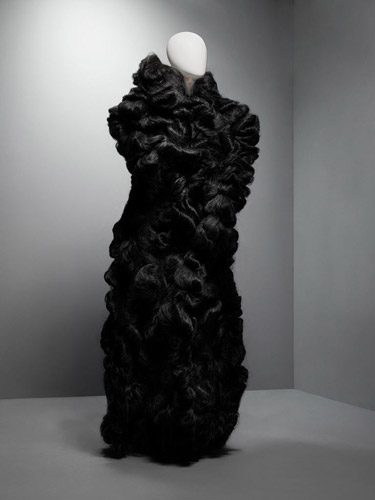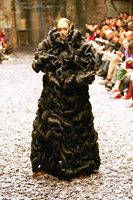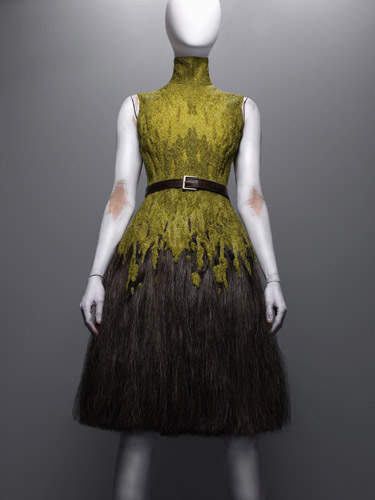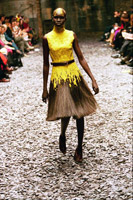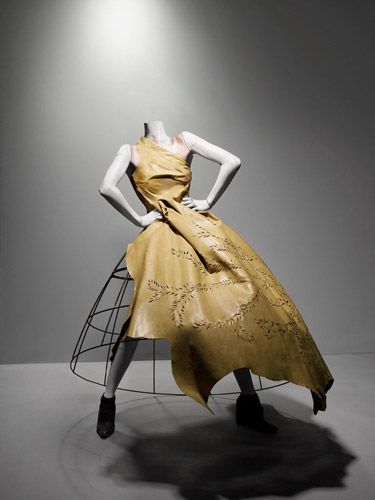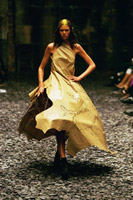Coat, Eshu, autumn/winter 2000–2001
Alexander McQueen (British, 1969–2010)
Coat
Eshu, autumn/winter 2000–2001
Black synthetic hair
Courtesy of Alexander McQueen
Photograph © Sølve Sundsbø / Art + Commerce
Audio clip: Adobe Flash Player (version 9 or above) is required to play this audio clip. Download the latest version here. You also need to have JavaScript enabled in your browser.
Andrew Bolton: The runway show for Eshu emphasized the raw power of the clothes.
Sam Gainsbury: Sometimes it wasn’t as complicated as a big special effects and a finale. And I think what Lee felt was that he had found this big empty location that was very raw; the collection was very raw.
We built a pathway down from the top of the building to the bottom of the building that the models had to walk down. And we mic’ed up their feet so you could hear them walking and coming.
And I think that Lee felt that it was enough.


 Vogue iPad app
Vogue iPad app